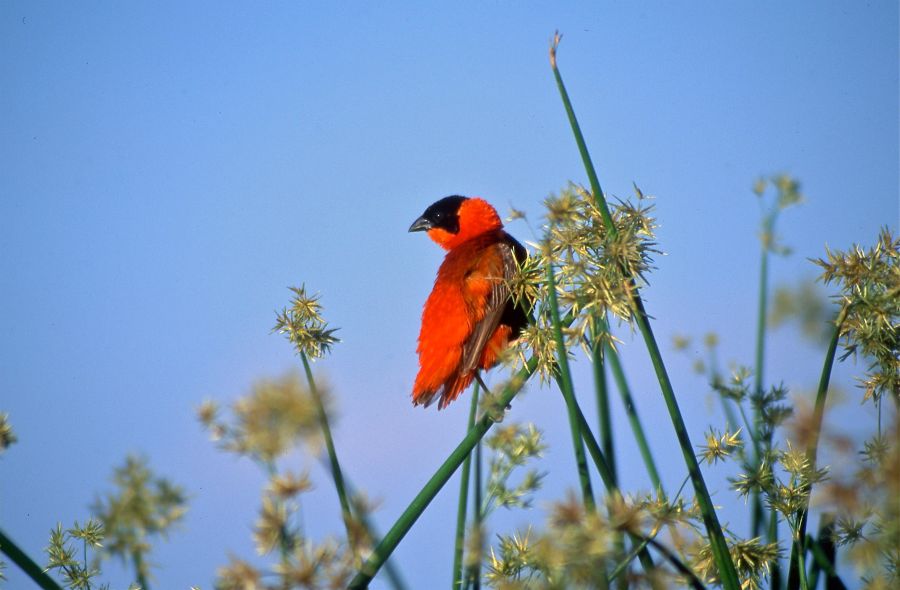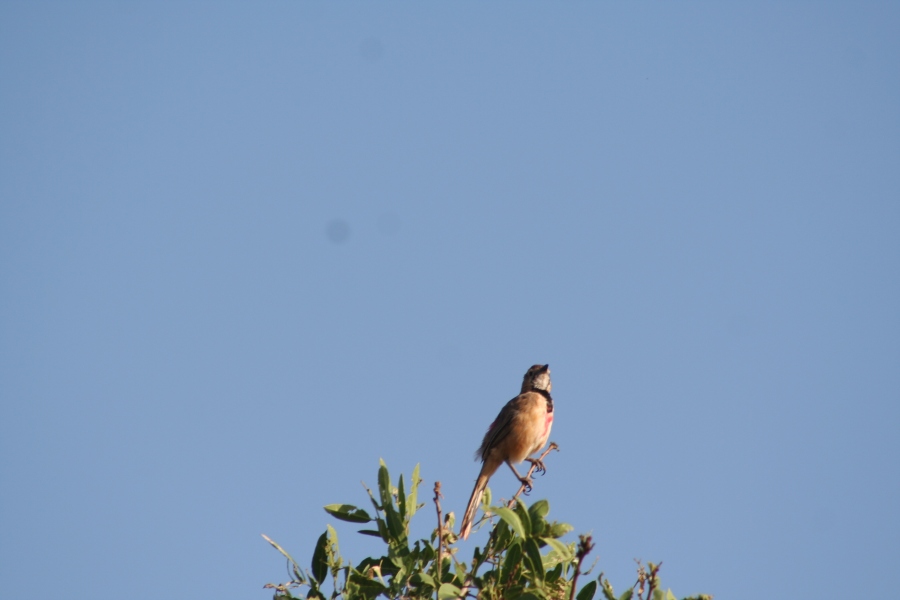Hello my fellow birders!
I’ve finally posted my trip report under Birding Trip Reports for January 25 – February 8, 2012. I will be updating it with photos shortly.
Here is an excerpt from the report! Click the link above to view the full report.
Trip Leader Joseph Aengwo
Participants: 5 Clients
Bird Species Recorded: 445
Animal Species: 34
For many bird people across the globe, the beginning of the year is a wonderful time. Yearly lists can start anew, and who knows what the next twelve months will bring? While rarities whet the appetite of any birder, the expected birds are much more frequently counted. And this was not any different for us when we started our 14 days birding trip that took us to birding hotspot found in eastern and coastal part of Kenya.
There were of course numerous avian highlights during our grand tour of that part of the country and of the nine or ten Kenyan endemics we encountered four, namely;
- Taita Thrush
- Taita Apalis
- Taita White-eye
- Clarke’s Weaver
We also saw rarities and restricted-range species such as:
- Sokoke Scops Owl
- Friedmann’s Lark
- Malindi and Sokoke Pipits
- Golden Palm and Taveta Golden Weavers
Of the other near-endemics and specials rarely recorded on other tours we also managed to record the following:
- Somali Ostrich
- Mountain Buzzard
- Shelley’s Francolin
- Vulturine Guineafowl
- Somali Courser
- Sooty Gull
- Black-faced Sandgrouse
- Fischer’s and Hartlaub’s Turacos
- African Barred Owlet
- Montane Nightjar
- White-headed Mousebird
- Eastern Green Tinkerbird
- Brown-breasted, White-eared, Red-and-yellow and D’Arnaud’s Barbets
- Pallid Honeyguide
- Mombasa and African Grey-headed Woodpeckers
- Fawn-coloured, Pink-breasted and Red-winged Larks
- Fischer’s Sparrow Lark
- Golden Pipit
- Pangani Longclaw
- Stripe-cheeked Fischer’s and Tiny Greenbuls
- Northern Brownbul, Dodson’s Bulbul, Scaly and Northern Pied Babblers
- East Coast Akalat
- Ashy Cisticolas
- Quil-Plover
- Somali Long-billed and White-browed Crombecs
- Red-throated Tit
- Little Yellow Flycatcher
- Forest Batis Long-tailed
- Taita Fiscal
- Three-streaked Tchagra
- Black-fronted Bush-shrike and Rosy-patched Bush-shrikes,
- East Coast Boubou
- Hildebrandt’s, Fischer’s and Magpie Starlings
- Plain-backed, Amani, Eastern Olive, Mouse-coloured, Hunter’s, Tsavo Purple-banded Sunbird,
- Parrot-billed,
- Kenya Rufous Sparrow
- Zanzibar Red Bishop
- Jackson’s Widowbird
- Black-cheeked Waxbill
- African Silverbill
- Village Indigobird
- Steel-blue and Straw-tailed Whydahs
- African Citril and White-bellied Canary







